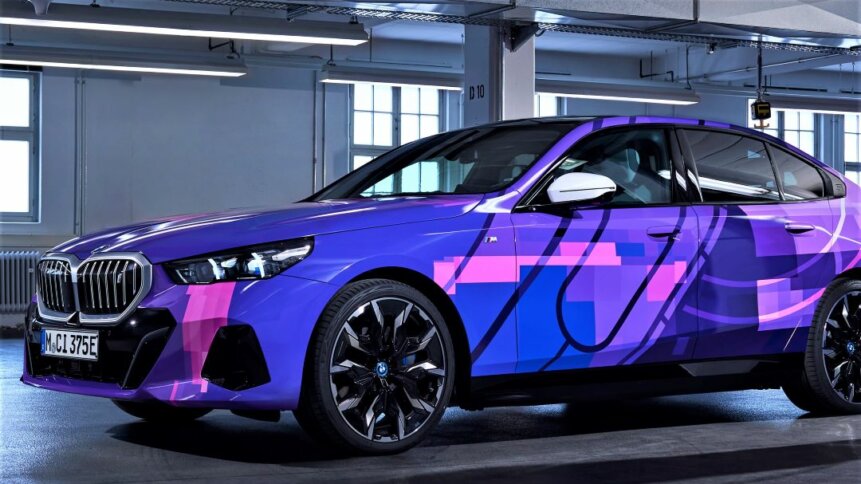Can automakers profit from playing video games in cars?

Car adverts may tempt viewers with images of open roads, but drivers know that the reality of getting from A to B is likely to be a more congested one. Mapping and location technology provider TomTom puts Dublin, Ireland, at the top of its list of cities where vehicles spend the most time in traffic. And to help combat the frustration of slow-moving journeys, automakers include a range of entertainment options in their models, which now includes being able to use smartphones as controllers to play video games in cars.
Naturally, vehicle passengers have long been able to bring hand-held consoles, such as Nintendo’s ever-popular Switch device, with them on journeys. But what if you’ve left your entertainment options behind? To help passengers get their video game fix, BMW Group – which includes Mini and Rolls Royce Motor Cars – has teamed up with N-Dream to bring what it describes as ‘a unique kind of in-car gaming to the road’.
Offered initially with the new BMW 5 series, cars now feature N-Dream’s gaming platform dubbed AirConsole. “It allows the driver and passengers to play so-called casual games while the vehicle is stationary as a way of passing time while waiting for the vehicle to charge,” writes BMW Group, which delivered 2,399,632 vehicles in 2022 (including 434,333 EVs, up from 147,175 in 2019).
Video games in cars
To start playing video games in cars, users first launch the AirConsole app on the vehicle’s dashboard and then point their smartphones at a QR code that appears on the panoramic display. And the configuration turns the handheld devices into gaming controllers with left, right, up, down, and other familiar options. Plus, the setup gives access to a master menu of video games through the AirConsole platform.
The arrangement suits both Apple and Android devices, and multi-player titles mean that passengers in the front and back of the vehicle can all join in and play video games in the car together. Under the hood, the video game runs on the BMW’s head unit and sends its telemetry to the cloud via the in-car SIM card. At the same time, controller commands issued by the players are received by the vehicle, via the cloud, and influence the game mechanics shown on the dashboard display.
Any vehicle with, or capable of upgrading to, iDrive (BMW’s in-car communications and entertainment system) version 8.5 upwards should be able to run the system. And it’s an example of another add-on experience enabled through software, which is something that automakers are experimenting with as a new business model.
Software-enabled features potentially streamline manufacturing for automakers, reducing the amount of hardware variations that need to be produced. BMW’s ‘heated-seats-as-a-service’ concept generated some push-back from customers who felt that they were being charged for something that they already owned. But, as mentioned, the business model does simplify assembly on the factory floor.
Subscription sales
And it’s not just BMW Group that is testing optional extras as a subscription sales idea. Mercedes offers an acceleration increase as a digital extra to its EV customers starting at US $60 per month, with savings for annual subscriptions and the option to make features permanent with a one-off payment. The settings boost power output from the electric drivetrain by up to 80 horsepower, and shave around 1 second off the 0 to 60 mph acceleration time.
Over-the-air (OTA) software updates combined with the increasingly electronic architecture of modern vehicles make switching optional extras on and off easier than ever before for car makers. But they also add temptation to vehicle owners who – knowing that the performance is already there, ready and waiting – may want to bypass subscription payments and activate features themselves.
The practice of designing a more powerful automobile and then detuning it across the model range isn’t new though. But previously, it would have required the addition of performance-restricting hardware – for example, fitting a smaller carburetor to budget vehicles – rather than just being able to limit capabilities digitally.
Already frustrated by longer commute times due to traffic congestion, it’s unlikely that consumers will celebrate having to pay monthly to access optional extras – even if it does, in principle, make cars cheaper to produce. But features such as being able to play video games in cars could put owners in a better mood, at least if they beat the other players or top the high scores table.
And subscription models appear to be here to stay, not just for optional extras, but for the entire vehicle. Forbes writes that by 2025-26, vehicle subscription programs could account for nearly 10% of all new vehicle sales in the US and Europe. And a recent survey by consultancy firm McKinsey found that 33% of respondents were open to trying a vehicle subscription in the future.










